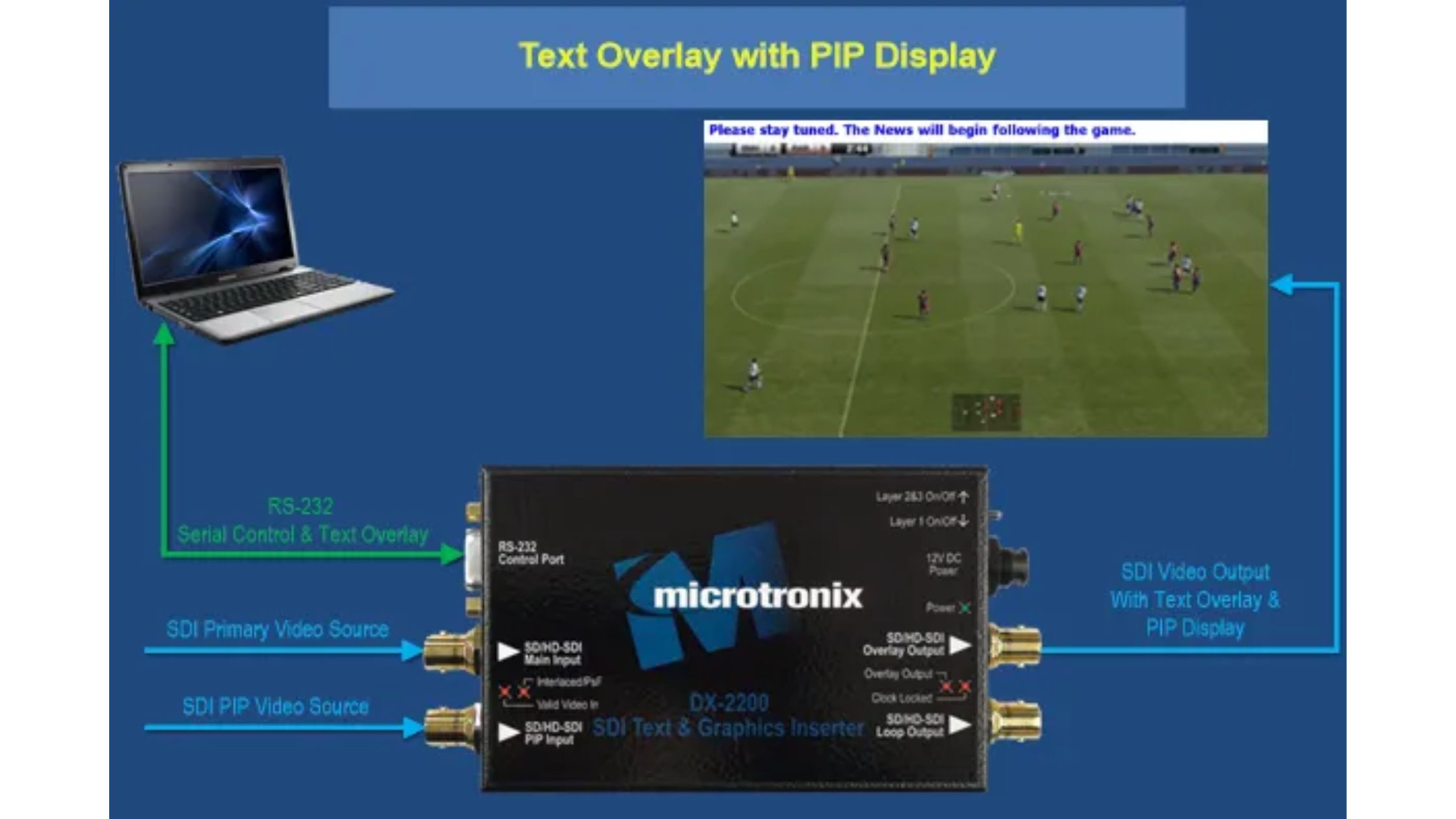Over the last decade, embedded video systems have shifted from simple visual outputs to high-performance, multi-layered interfaces. Engineers today aren’t just looking to push pixels—they’re designing intelligent systems that handle 4K UHD signals with surgical precision.
As demands increase for richer visual experiences in areas like surveillance, broadcast, industrial imaging, and medical diagnostics, so does the complexity. What was once a luxury—like a crisp PIP Video Display or seamless video on-screen display—is now just table stakes. Developers need more control, deeper integration, and smoother visuals. That’s where the magic of full-service product development comes into play.
What’s the Deal with PIP and OSD Anyway?
When you break it down, Picture-in-Picture (PIP) isn’t just about showing one video feed inside another for kicks. It’s a functional solution, useful in surveillance systems to keep tabs on multiple angles or in broadcast systems to show real-time graphics. Likewise, a video on-screen display isn’t just for tossing up text or status bars—it’s about contextual layering, helping viewers or operators make decisions faster. So how do you combine both—especially in an embedded setup—without the visuals going haywire or the system throwing a fit? That’s the billion-pixel question.
Challenges That Come With the Package
Anyone who’s dabbled in video system design knows the usual suspects: limited processing power, high data throughput, and jittery synchronization. Add to that the need to manage both a PIP Video Display and interactive video on-screen display features, and things start to look like a spaghetti junction of timing conflicts. You can’t just slap some overlay code on top and call it a day. It needs proper timing management, bandwidth allocation, and format compatibility across SDI, HDMI, and other protocols. Even small frame delays or dropped overlays can wreck user experience—especially when lives or broadcast ratings are on the line.
So, Who’s Doing the Heavy Lifting?
This is where product development gets interesting. You want a partner who speaks both hardware and software fluently—someone who doesn’t blink when the conversation shifts from FPGA logic to GPU processing. Enter Microtronix. As a full-service product development company, Microtronix doesn’t just provide a toolkit—they build the tools tailored to your application. Whether you’re trying to combine 4K video with live graphical overlays or sync multiple video inputs in real time, their integrated design approach gives your product the backbone it needs. No cookie-cutter shortcuts here—just solid, optimized engineering.
Smart Integration: It’s Not Just a Buzzword
One of the biggest hurdles in creating complex video interfaces is keeping everything tight and tidy. The last thing you want is a laggy video on-screen display or a PIP feed that freezes every time a button is pressed. Smart integration means managing latency, compression, memory, and heat—without letting any one variable bottleneck the system. Microtronix tackles this with a mix of proprietary frameworks, reusable IP blocks, and hardware-aware design decisions that shave down development cycles while boosting reliability. That’s not just smart—it’s downright efficient.
Let’s Talk Features—What Should You Look For?
When exploring PIP Video Display systems, flexibility tops the wishlist. Can the system scale across resolutions? Can it handle dynamic content without choking? Does it allow graphical overlays with transparency, animation, or real-time control? And what about updates—can the firmware be revised in-field, or are you stuck shipping new hardware every time the UI changes? With integrated product development, the focus shifts to future-proofing. Microtronix bakes in adaptability by designing modular architecture and leveraging customizable SoCs, meaning you’re not boxed into one version of your product.
Hardware-Software Harmony: A Developer’s Dream
Any developer who’s spent sleepless nights debugging memory leaks or resolving video-tearing issues knows the pain of fragmented development. Most off-the-shelf systems require endless duct-taping to marry hardware with software. Microtronix sidesteps that mess by designing both under one roof. It’s like having an orchestra with one conductor—you’re not left praying that the hardware team and the software team are even reading the same sheet music. The result? A smooth, flicker-free experience with buttery transitions between overlays, frames, and control layers.
What Industries Are Getting This Right?
Applications of these technologies stretch across the board. In broadcast media, PIP feeds help live editors cue content while video on-screen display elements deliver graphics in real time. Medical imaging benefits from multiple data overlays during procedures, while drones and robotics utilize dual feeds and graphical cues for navigation and diagnostics. Military-grade systems demand encrypted, real-time multi-layer visuals and industrial inspection units rely on data-fed overlays to flag anomalies. Wherever visual fidelity meets decision-making, these systems are not just useful—they’re essential.
The Final Word: Why an Integrated Approach Wins
Combining PIP Video Display and video on-screen display in embedded 4K environments isn’t just an engineering puzzle—it’s a strategy. Without the right team and toolkit, things get messy quickly. Microtronix doesn’t just play in this space—they help define it. Their full-service approach ensures every component, from board layout to codec performance, is aligned toward a single goal: delivering video solutions that work, scale, and evolve.
Conclusion
Integrating advanced PIP Video Display and seamless video on-screen display features in embedded systems isn’t about tossing in a few overlays and calling it a day. It requires deep collaboration between hardware and software, careful system planning, and future-ready design choices. Microtronix rises to the challenge with their full-service product development model, offering tailored solutions that fuse power, flexibility, and real-time capability into one polished product. For engineers and teams chasing top-tier visual performance without compromise, this kind of integrated development isn’t just helpful—it’s mission-critical.









